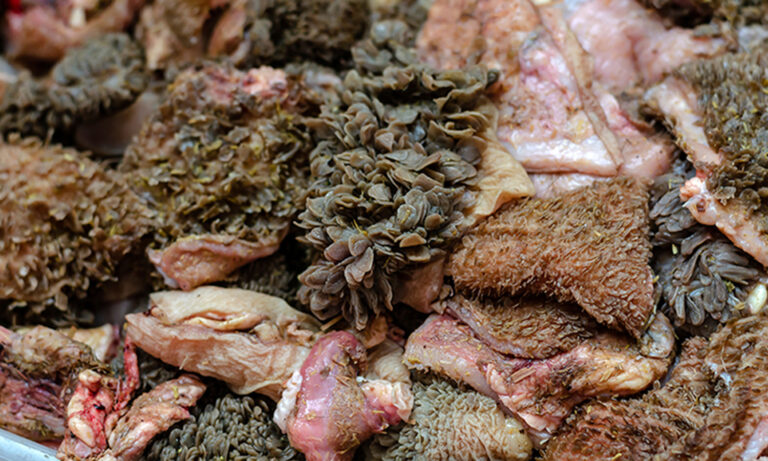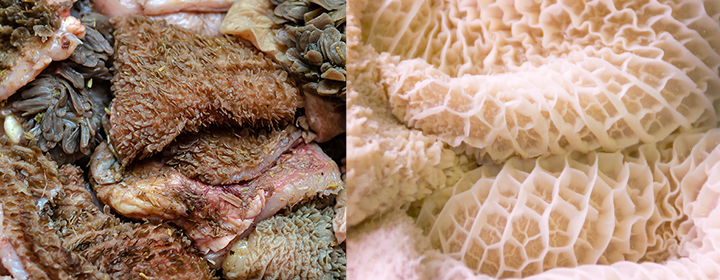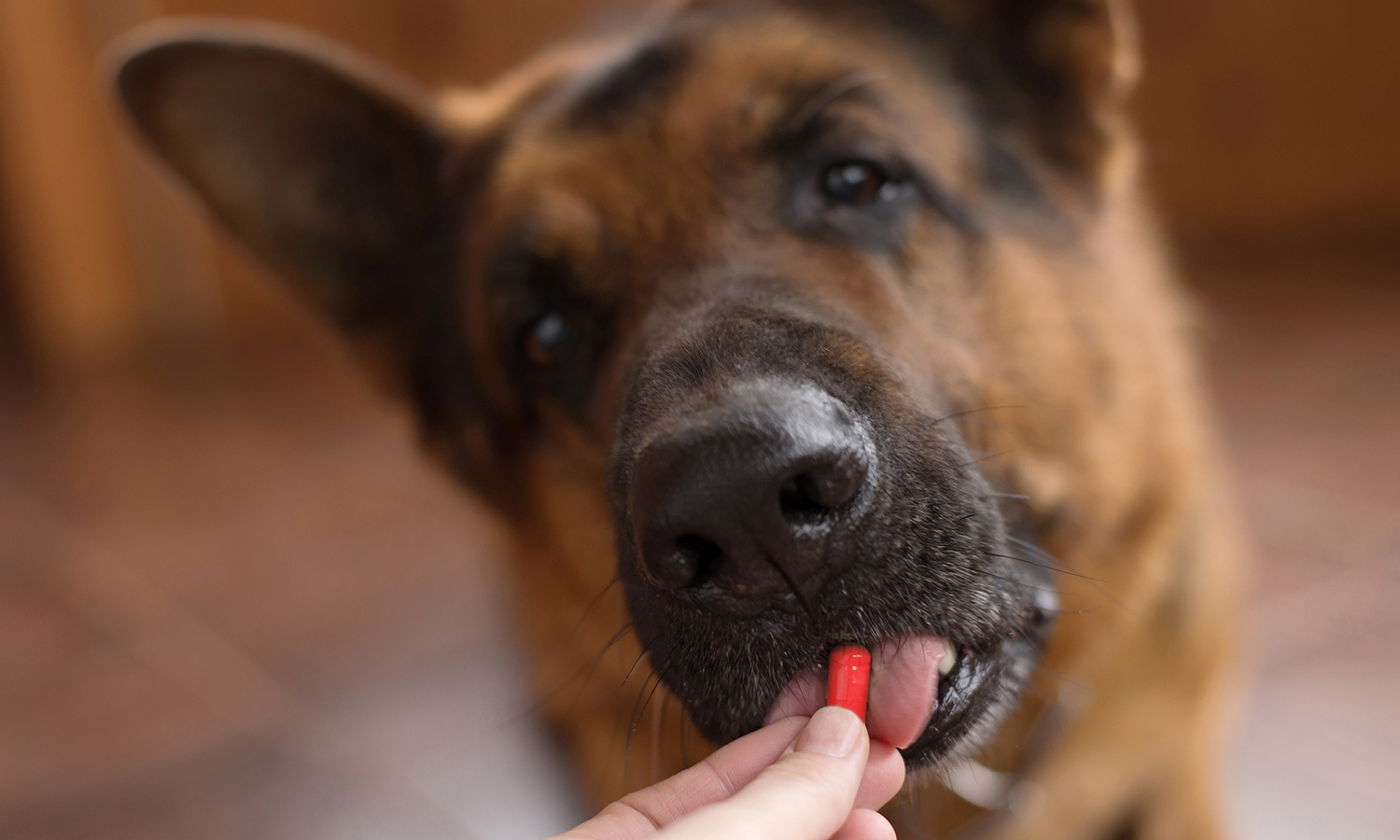
Ever open a package of green tripe and think, OMG, how can my dog eat this stinky, smelly stuff. Is it really good for them? How much and how often should you feed it—or should you feed it at all? We’re about to answer these questions and more. So let’s talk TRIPE TRIVIA!
What Is Tripe?
Tripe is the nutrient-rich lining of the stomach of ruminant animals such as beef cattle, bison, sheep, goat and deer. Green tripe is raw and unprocessed. Green does not refer to its color, but rather to the fact that the product has not been cleaned, bleached or scalded in preparation for human consumption.
Human-grade tripe, found in many supermarkets, is NOT same as green tripe. It has been processed and is easily distinguished from green tripe because it is white or light cream in color.

Unprocessed green tripe Human-grade, processed tripe
Green Tripe Benefits
The best thing about green tripe is most dogs LOVE the stuff. It looks gross and it smells to high heaven. This is also great news for those who have picky eaters and for people wanting to offer their dogs additional sources of veggies and organ meat.
Green tripe is also a good source of manganese which helps to offset the fact that most other meat sources fall short of the this important mineral. Adding green tripe to prey-model, raw diets can improve manganese balance within the diet.
Green tripe has a 1:1 calcium phosphorus ratio which is terrific. If you have researched raw diets, you know very important this combination is for your dog’s diet. Note however, that just because green tripe has this perfect ratio, this does not mean it contains enough of these compounds for your dog—if fed exclusively.
Lastly, green tripe contains a number of enzymes that might prove beneficial for dogs. Enzymes are proteins that act as catalysts in metabolism. When a substance in the body needs to be converted into something else, nature uses enzymes to speed up this process. Enzymes can, for example, help to break down certain food products in the stomach. The exact benefits of these enzymes in dogs however, have not been established.
Is Green Tripe a Balanced Diet?
The answer is NO. Green tripe alone is not a balanced diet. There are some commercially canned tripe varieties labeled complete and balanced, but you’ll notice their product labels indicate the addition of other vitamins and minerals.
The green tripe dietary balance confusion stems from the calcium to phosphorus ratio. These two compounds work together in your dog’s body. If the balance is off on either of these compounds, it can affect your dog’s requirement or need for the other. For example, if your dog gets the minimum requirement of dietary phosphorus, but too much calcium, his body will require more phosphorus which can lead to a phosphorus deficiency. Phosphorus deficiency is thought to contribute to hip dysplasia and other bone growth issues. In the reverse, where there is too much phosphorus and not enough calcium, this can lead to kidney failure.
Green tripe is not a balanced diet when fed exclusively. It's 1:1 calcium to phosphous ratio does not mean it contains the minimum amount of either compound needed to maintain good health.
The important thing to reminder is a 1:1 ratio of calcium to phosphorus doesn’t mean your dog is getting enough of either to meet it’s minimum requirements for good health. Your dog might be getting too much or too little of both. Bottom line, green tripe is not a balanced diet by itself, and it should not be fed exclusively or in excess. Your dog should get calcium and phosphorus from other dietary sources.
What About Green Tripe as a Source for Probiotics?
Some pet owners believe green tripe is a great source of probiotics. Probiotics are live microorganisms touted as providing health benefits when consumed—generally by improving or restoring the gut flora. Granted, there are a lot of beneficial bacteria in the stomachs of ruminant animals. Problem is, most of these organisms produce cellulase which is used to break down cellulose, the main component of plant cell walls. These are very important to animals that eat primarily grass. Additionally, these bacteria are conditioned to survive in a ruminant’s stomach —which is very different from that of a dog. A great number of these bacteria die immediately when the host animal is processed—as the conditions and temperature in the gut change radically. And lastly, the longer green tripe is frozen or sits canned on a shelf, the greater the death rate of the remaining bacteria.
Canned green tripe goes through even more processing than fresh, so the amount of organisms surviving long enough to make it to your dog’s dinner bowl are few.
Conclusion, the vast majority of probiotic bacteria in green tripe do not survive processing.
To Feed or Not To Feed?
Just because green tripe isn’t a balanced diet by itself and lacks significant probiotics, doesn’t mean it is not an excellent food source for your dog. Green tripe tastes great, it contains manganese which is traditionally low in most raw diets and its smell entices even the pickiest of eaters.
Green tripe is also great if you seek greater variety in your dog’s diet—whether feeding raw or kibble. A good rule of thumb would be to include green tripe as a part of your dog’s diet 1-2 times weekly. Your dog will love you for it!
Note: If your dog needs probiotics, we suggest adding a quality, vet-recommended probiotic supplement.




